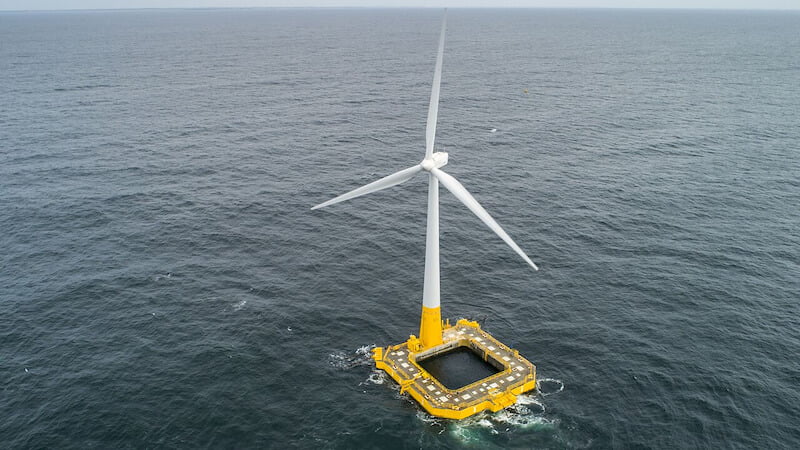
Floating wind turbines could significantly increase the energy yield from wind power. The systems are much more efficient than on land and do not disturb the landscape.
Although the expansion of wind energy occasionally comes to a halt, capacities have increased significantly over the past ten years. Energy suppliers still often face a problem. In many places, citizens' associations are protesting against the construction of additional facilities. Floating wind turbines in particular therefore represent an alternative.
The systems have the potential to increase the possible energy yield many times over. The EU Floatech project is therefore pushing forward the development of floating wind turbines in order to achieve an economic breakthrough.
The technology differs from conventional offshore wind turbines, especially in its construction. The systems float on platforms that are anchored deep in the sea.
Floating wind turbines access 80 percent of all wind resources
This design allows the use of wind energy in areas with sea depths of over 60 meters. This is relevant because around 80 percent of all wind resources are located in these areas. Countries with steep coastlines such as Spain, Portugal, Japan and the USA can particularly benefit from this.
In addition to the ability to install wind turbines in deeper waters, floating wind turbines also have other advantages. One example is reduced environmental impact because manufacturers do not have to put concrete foundations into the seabed.
This allows construction far away from the coast, which in turn could minimize resistance from the local population. Despite these advantages, many projects are still in the pilot stage. Reasons include concepts for floating support structures that have not yet been fully developed and the high overall costs.
TU Berlin is working on an effective software solution for planning and operation
The Floatech project, led by TU Berlin, aims to overcome these challenges. The core of the project is the further development of the QBlade simulation software. This is intended to calculate all relevant aspects of floating wind turbines.
These include: the development of efficient and precise software solutions, the application of adapted control strategies to increase efficiency and reduce load, and the development of a cost analysis tool. QBlade-Ocean enables the simulation of different wave states and the calculation of the forces acting on the structure.
The tool could play a key role in conducting accurate cost analyzes to improve the economic viability of floating wind technologies. Researchers at the TU have already used the software to develop and perfect special control strategies for floating wind turbines.
Also interesting:
Source: https://www.basicthinking.de/blog/2024/02/29/schwimmende-windraeder/


